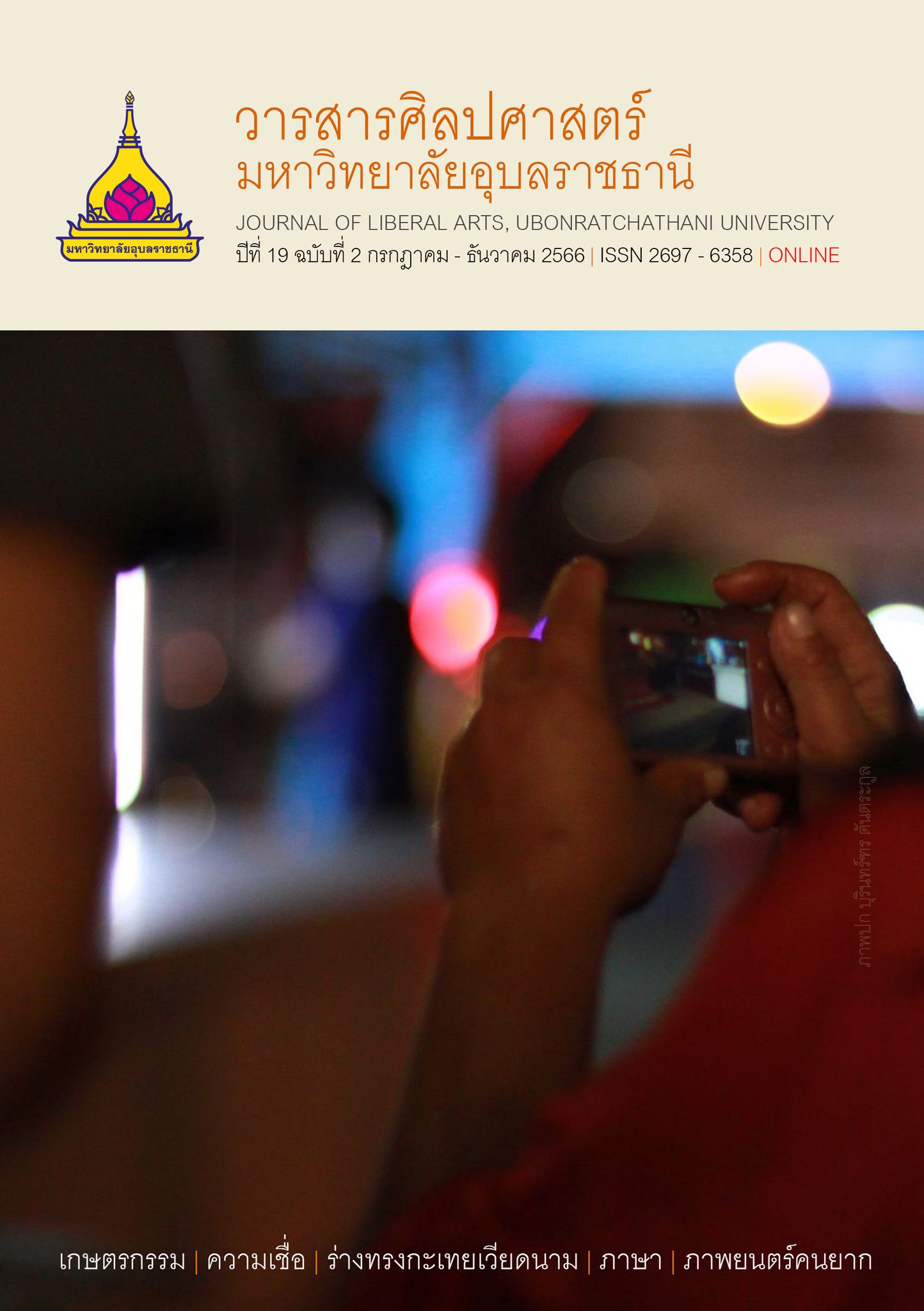อัตลักษณ์และการตลาดการท่องเที่ยวแบบจุดหมายปลายทางเดียว เชื่อมโยงไทย - ลาว กรณีศึกษาพื้นที่เขตพัฒนาเศรษฐกิจพิเศษ มุกดาหาร – สะหวัน - เซโน และนครพนม - ท่าแขก
Main Article Content
บทคัดย่อ
การวิจัยครั้งนี้มีวัตถุประสงค์ คือ (1) ศึกษาศักยภาพและอัตลักษณ์การท่องเที่ยวในพื้นที่เขตพัฒนาเศรษฐกิจพิเศษ (2) ศึกษาความต้องการของนักท่องเที่ยวเพื่อกำหนดตำแหน่งทางการตลาด และ (3) เพื่อเสนอแผนกลยุทธ์ทางการตลาดบนฐานของอัตลักษณ์การท่องเที่ยว โดยใช้กรณีศึกษาพื้นที่เขตพัฒนาเศรษฐกิจพิเศษ มุกดาหาร–สะหวัน-เซโน และนครพนม-ท่าแขก การวิจัยนี้เป็นแบบผสมผสาน ใช้เครื่องมือเชิงปริมาณ คือ แบบประเมินศักยภาพแหล่งท่องเที่ยว กับภาครัฐ เอกชน และชุมชนท้องถิ่น นอกจากนี้ยังใช้แบบสอบถาม กับกลุ่มตัวอย่างจำนวน 300 คน เพื่อศึกษาความต้องการของนักท่องเที่ยว สำหรับเครื่องมือเชิงคุณภาพ ใช้การระดมความคิดเห็น เพื่อสังเคราะห์อัตลักษณ์การท่องเที่ยว ตำแหน่งทางการตลาด และกลยุทธ์ทางการตลาด โดยผู้มีส่วนได้ส่วนเสียจาก 2 จังหวัด ในประเทศไทย และ 2 แขวงใน สปป.ลาว
ผลการศึกษาพบว่า พื้นที่ที่มีศักยภาพการท่องเที่ยว (1) ระดับมาก คือ จังหวัดนครพนม (2) ระดับปานกลาง คือจังหวัดมุกดาหาร เมืองไกสอน พมวิหาน และเมือง ท่าแขก ด้านอัตลักษณ์การท่องเที่ยว กำหนดได้ 4 รูปแบบ คือ (1) อัตลักษณ์การท่องเที่ยวเชิงธรณีสัณฐาน (2) อัตลักษณ์การท่องเที่ยวเชิงศาสนา (3) อัตลักษณ์การท่องเที่ยวเชิงสถาปัตยกรรม และ (4) อัตลักษณ์การท่องเที่ยวโดยมีแม่น้ำเป็นฐาน ด้านความต้องการของนักท่องเที่ยว ประกอบไปด้วย (1) การสื่อความหมาย (2) ราคา (3) ช่องทางการจัดจำหน่าย (4) การส่งเสริมการขาย (5) การใช้ภาษาต่างประเทศ (6) การบริหารจัดการ และ (7) การสร้างอัตลักษณ์ร่วม สำหรับการกำหนดตำแหน่งทางการตลาด พบว่ามี 3 ระดับ คือ(1) ระดับเมืองผ่าน (2) ระดับเมืองรอง และ (3) ระดับจุดหมายปลายทาง และสามารถนำมากำหนดเป็นกลยุทธ์ทางการตลาด คือ (1) กลยุทธ์ที่ 1 การริเริ่มกำหนดแผนแม่บทในแต่ละภาคส่วนเพื่อรองรับการท่องเที่ยวแบบบูรณาการ (2) กลยุทธ์ที่ 2 การสร้างความเข้มแข็งให้แก่ทรัพยากรมนุษย์และกระจายผลประโยชน์ที่ทั่วถึง และ (3) กลยุทธ์ที่ 3 การกำหนดนโยบายหรือกฎหมายด้านการท่องเที่ยวเฉพาะพื้นที่ระหว่างรัฐต่อรัฐ
Downloads
Article Details

อนุญาตภายใต้เงื่อนไข Creative Commons Attribution-NonCommercial-NoDerivatives 4.0 International License.
เอกสารอ้างอิง
References
Agakowa, E. (2008). Special Economic Zones and the Future of Tourism on Bikal. Washington, D.C.: Institute of World Affairs.
ASEAN. (2016). ASEAN Tourism Strategic Plan 2016-2025. Jakarta: ASEAN.
Asian Development Bank. (2016). The Role of Special Economic Zones in Improving Effectiveness of GMS Economic Corridors. Manila: ADB.
Chumpradit, K. (2017). Identities Analysis for the Value Added of Cultural Tourism Destinations in Chiang Rai Special Economic Zone. [in Thai]. Chiang Rai: Chiang Rai Rajabhat University.
Cohen, E. (1988). Authenticity and Commoditization in Tourism. Annals of Tourism Research, 15 (3), 371 - 386.
Craib, I. (1998). Experiencing Identity. London: SAGE. Department of Tourism. (2016). ASEAN Tourism Strategic Plan: ATSP
- 2025. [in Thai]. Bangkok: Ministry of Tourism and Sports.
Du Gay, P. (1997). Production of Culture and Cultures of Production. London: SAGE.
Glaser, B. (1999). Discovery of Grounded Theory Strategies for Qualitative Research. New York: Routledge.
Immigration Bureau. (2017). Thailand and Lao PDR Immigration Statistics. [in Thai]. Bangkok: Immigration Bureau.
Indonesia Tourism Investment. (2018). An Invitation to Invest in Tourism Development in Tanjung Kelayang Special Economic Zone,
Bangka Belitung Province, Republic of Indonesia. Jakarta: Indonesia Tourism Investment.
Jittangwatthana, B. (2012). Marketing Management for Tourism Industry. [in Thai]. Bangkok: Press and Design.
Pongnak, I. (2014). Identity of U Thong Ancient City and Cultural Tourism Development in Suphanburi Province. [in Thai]. Bangkok:
Chulalongkorn University.
Korea Tourism Organization. (2017). Special Economic Zone for Specialized Regional Development. Seoul: Korea Tourism Org.
Lynch, K. (1960). The Image of City. Massachusetts: The M.I.T. Press. Mekong Tourism Coordinating Office. (2017). Greater Mekong Subregion
Tourism Sector Strategy 2016–2025. Bangkok: Mekong Tourism Coordinating Office.
Ministry of Tourism and Sports. (2006). Criteria and Assessment of Tourism Potential. [in Thai]. Bangkok: Ministry of Tourism and Sports.
Ministry of Tourism, Government of India. (2016). Enclavisation of Tourism: Special Tourism Zones in India. New Delhi: Ministry of Tourism,
Government of India.
Office of the National Economic and Social Development Council. (2018). Special Economic Zones. [in Thai]. Bangkok: Office of the National Economic and Social Development Council.
Sindecharuk, T. (2018). Sustainable Tourism Coordination between International Sister Cities. [in Thai]. Bangkok: Designated Areas for
Sustainable Tourism Administration (Public Organization).
Sobirov, B. (2017). The Concept of the Tourist Economic Zone: Case of Uzbekistan. Samarkand: Samarkand Institute of Economics and Service.
The Board of Investment of Thailand. (2016). Investment of Special Economic Zones Handbook. [in Thai]. Bangkok: The Board of
Investment of Thailand.
The Office of Strategy Management. (2017). Tourism Promotion of Sanuk Province. [in Thai]. Sakon Nakhon: OSM.
Tourism Authority of Thailand. (2017). Tourism Marketing. [in Thai]. Bangkok: Tourism Authority of Thailand.


